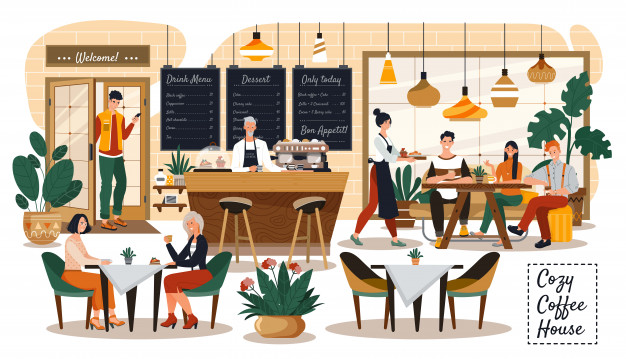Must-Have Seating Options in Restaurant Furniture
Seating is the foundation of any dining space, making it one of the most important categories of restaurant furniture. Chairs, bar stools, and booths should be chosen based on comfort, durability, and design. For casual eateries, lightweight chairs that are easy to move and clean work best, while fine-dining establishments often prefer upholstered chairs or booths that enhance comfort and elegance. Bar stools are essential for restaurants with counters or lounges, offering guests a social seating option. The seating should also reflect the restaurant’s theme—wooden chairs for rustic interiors, sleek metal chairs for modern designs, and cushioned booths for cozy spaces. Since guests spend most of their dining time seated, investing in comfortable and stylish furniture improves the customer experience and encourages longer visits. Properly selected seating ensures functionality while contributing significantly to the restaurant’s overall aesthetic and brand identity.
Essential Tables That Define Restaurant Furniture Layouts
Tables are central to restaurant furniture, as they directly influence dining experience and space efficiency. The right tables balance practicality with design appeal, creating a welcoming environment for guests. Small two-top tables provide flexibility, allowing them to be pushed together for larger groups, while banquet-style tables suit family-friendly or group dining spaces. Material choice also matters—wooden tables add warmth and elegance, while laminate or metal surfaces are durable and easy to maintain in high-traffic settings. Table height should complement seating options to ensure comfort and proper posture. Additionally, spacing between tables is crucial for customer privacy and smooth staff movement. A well-planned table layout optimizes capacity without making the space feel cramped. Since tables often act as focal points, their design should match the overall theme and style of the restaurant furniture. Ultimately, tables are essential pieces that define both functionality and atmosphere.
Storage and Utility Pieces in Restaurant Furniture
While seating and tables are the most visible, storage and utility pieces are equally vital parts of restaurant furniture. These include service stations, shelving units, sideboards, and hostess stands that keep the dining space organized and efficient. Service stations store essentials like cutlery, menus, and condiments, enabling staff to serve quickly without disrupting guests. Shelving units or cabinets provide space for glassware, linens, and supplies, ensuring they remain accessible yet neatly tucked away. Hostess stands, though functional, also contribute to first impressions, welcoming guests in style. Utility pieces may not be the highlight of restaurant décor, but they support daily operations and help maintain a professional, clutter-free environment. Choosing well-designed, durable utility furniture ensures both functionality and style, blending seamlessly with visible restaurant furniture. When integrated thoughtfully, these pieces enhance workflow efficiency while supporting a clean and inviting dining atmosphere.
How Restaurant Furniture Shapes Ambiance and Customer Comfort
Restaurant furniture is more than functional—it sets the tone for the entire dining experience. The choice of seating, tables, and décor elements directly impacts how comfortable and welcome guests feel. A cozy restaurant with cushioned booths creates a sense of intimacy, while modern spaces with sleek metal chairs and minimalist tables exude sophistication. The style, colors, and finishes of restaurant furniture also influence mood; bright and vibrant furniture creates an energetic vibe, while darker tones establish elegance. Comfort is equally important—guests are more likely to stay longer and return if the furniture is supportive and inviting. Even utility furniture plays a role in maintaining ambiance by keeping the space organized. Ultimately, restaurant furniture shapes not only the aesthetic appeal but also the overall customer experience. By aligning furniture with the brand’s identity, restaurants can build an atmosphere that encourages loyalty and repeat business.
Conclusion
Essential restaurant furniture goes beyond simple seating and tables—it defines the character, comfort, and efficiency of a dining space. Seating options such as chairs, bar stools, and booths set the foundation for guest comfort, while well-chosen tables establish layouts that maximize both space and experience. Storage and utility pieces, though less visible, support smooth operations and help maintain a professional environment. Together, these elements shape ambiance, reflecting the restaurant’s brand identity and creating a memorable dining atmosphere. By carefully selecting restaurant furniture that balances durability, design, and functionality, owners can ensure long-term value and customer satisfaction. Each piece contributes to the overall success of the establishment, from first impressions to lasting comfort. In today’s competitive market, thoughtful investment in restaurant furniture is not just about furnishing a space—it’s about building an inviting environment that keeps customers coming back.







